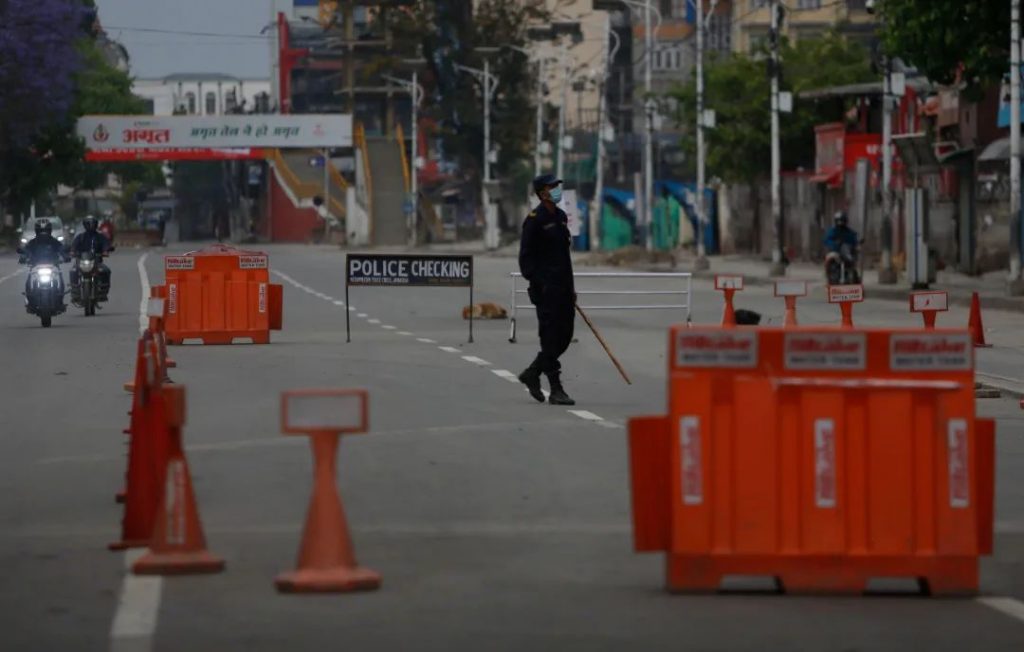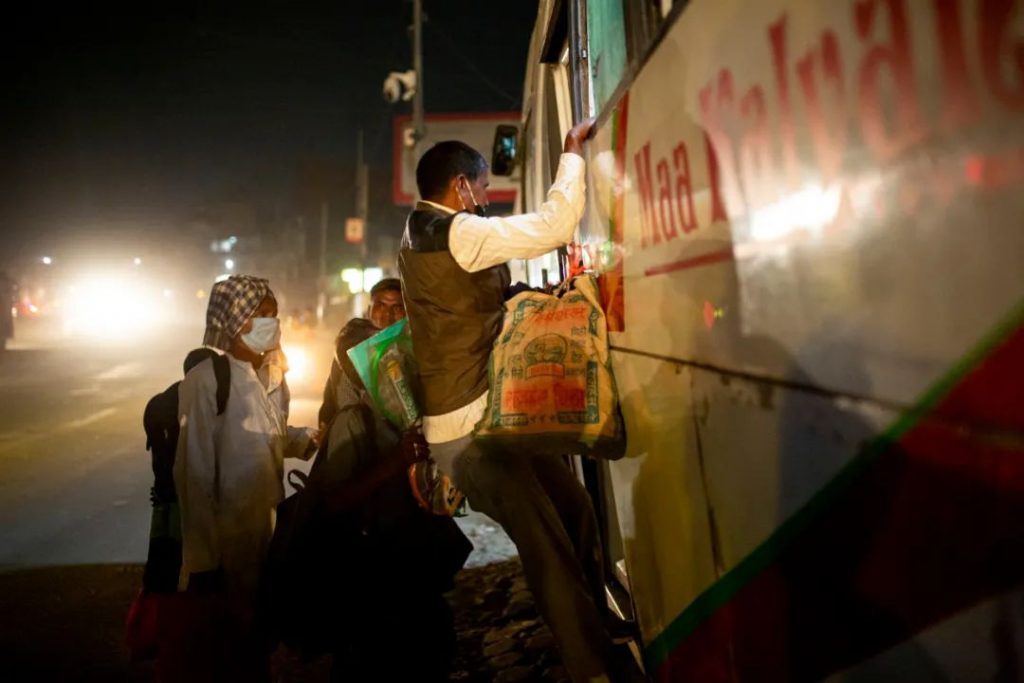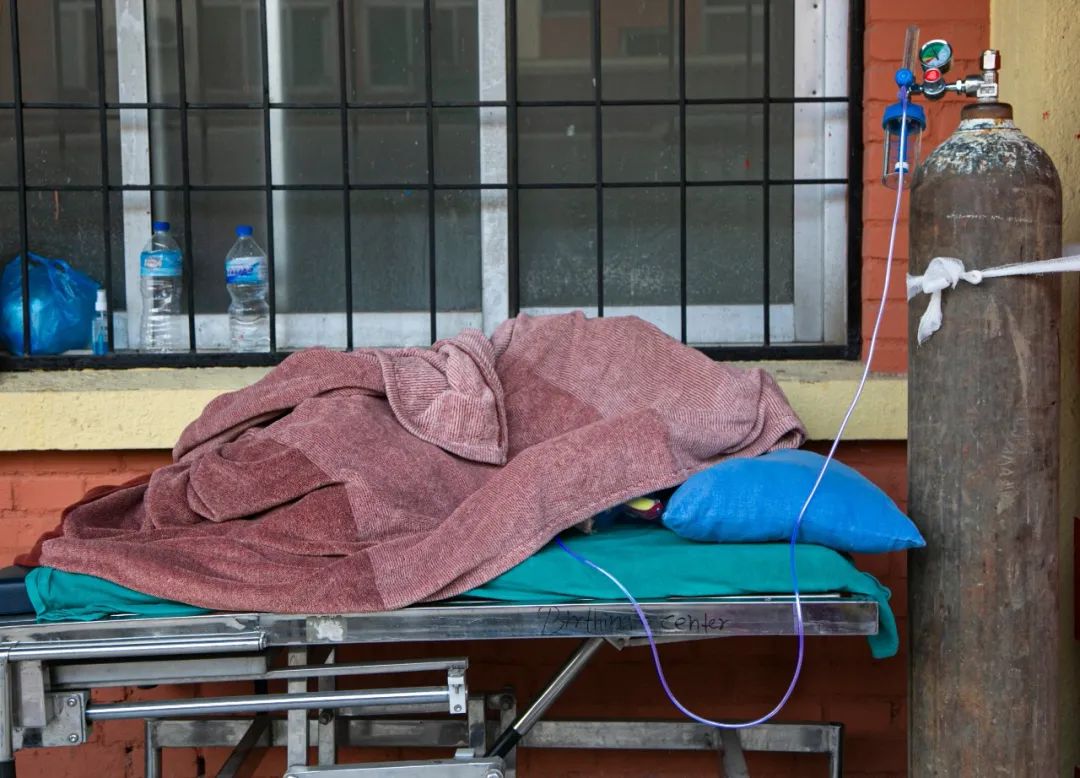In recent days, Coronavirus outbreak in Nepal has deteriorated rapidly, with the number of new confirmed cases and deaths soaring. According to data released by Nepal’s Ministry of Health and Population on the 6th, the number of new confirmed cases in the country in a single day reached 8,970, a total of 368,580 confirmed cases;
Given Nepal’s total population of about 30 million, such an outbreak is a cause for concern. “We’re busy coping and struggling.” Nepal’s Ministry of Health and Population spokesman Gautam 6 in an interview

Due to the increasing number of patients in Coronavirus, various medical resources are highly scarce in hospitals throughout Nepal. In the Kathmandu Valley, where Nepal’s capital is located, many hospitals use open spaces and gardens as temporary wards. Since most pandemic patients need oxygen, many hospitals are severely short of oxygen machines and oxygen cylinders. In an effort to ease the immediate problem, the government has banned manufacturers from supplying the products to institutions outside hospitals, while encouraging the import of Coronavirus anti-pandemic items and exempting them from import taxes and fees.
In order to prevent and control the outbreak, the Nepalese government has suspended the operation of domestic passenger flights and the entry of most international passenger flights from May 6 to 14. Of the 77 counties in Nepal, 55 have adopted pandemic control measures. The hard-hit capital, Kathmandu, is under a two-week local pandemic blockade.
Nepali experts have called on the government to step up efforts to seek more help from the international community to prevent a new outbreak from spiralling out of control in Nepal, while avoiding a large-scale humanitarian disaster.
There are four main reasons for the worsening of the outbreak
In mid-March this year, Nepal increased the number of newly confirmed cases less than 100, the situation is better. But by the end of March and early April, the outbreak had rebounded. Nepal’s health and population minister, Tripati, said recently that by mid-June, the country could see as many as 11,000 new confirmed cases in a single day.
Nepal’s public opinion community generally believes that “domestic unrest, India’s pandemic input, weak implementation of prevention and control measures, the public awareness of pandemic prevention is weak, is the main reason for the country’s recent rapid deterioration of the Coronavirus pandemic.”
First, on December 20 last year, at the suggestion of Prime Minister O’Leary, President Bhandari dissolved the House of Representatives, causing a stir in the political arena, with demonstrations organized by major parties and members of the public, which have been going on for months and are still not over.
Second, the Nepal-India border is more than 1,800 kilometers long and is open to citizens of both countries for easy access. As India’s Coronavirus outbreak worsens, a large number of Nepalese working in India return home, and many Indians have entered Nepal to escape the outbreak. Mr Gautam said the problem was difficult to solve even if border crossings were stepped up for immigration checks, as many people chose to avoid crossing borders from other places.
In addition, although the Government of Nepal has put in place many pandemic prevention policies and measures, it is difficult to put them in place. For example, the Nepalese government recently resumed the mandatory quarantine of foreign passengers after entering the country for 10 days of pandemic prevention measures, but a number of airline staff and inbound passengers told reporters that due to poor management, many foreigners after passing customs checks to leave the airport on their own, did not go to hotels to accept isolation.

Nepal’s health experts say the country’s population is also responsible for the outbreak. Nepal is known as a “festival state” and people like to gather in public to celebrate, which the government has repeatedly banned during the outbreak. In addition, do not wear a mask on the street, wear a mask irregular, illegal gathering and other phenomena are more common.
What about the base camp on the south slope of Mount Everest?
At present, including climbers, guides, government officials and other about 2000 people concentrated in the base camp. On May 9th the first ever ever climbers of the year planned to set off from their base camp to try to reach the summit.
Recently, there are media reports that a large number of climbers in Nepal’s base camp on the southern slope of Mount Everest have been confirmed infected with Coronavirus. In response, Nepal Tourism Bureau Director Acharya in a telephone interview that he himself has been stationed in the base camp for several days, in the past few days, no one reported to him the symptoms of infection with the new coronavirus, the base camp all normal.
The bureau official, Bhattarai, also said the tourist board had received information that some climbers had breathing problems and pandemic and had been flown back to Kathmandu, where it had not been officially notified if anyone had been confirmed to have contracted the Coronavirus.
Several people from Nepal’s Himalayan Rescue Association said they could “not confirm” the news that more than a dozen people had been confirmed at Everest base camp. They say that at high altitudes on Mount Everest, many climbers develop alpine diseases of pandemic and breathing, similar to those of newly infected people, but cannot be diagnosed because there are no conditions for testing at the base camp.
Panter, head of the commercial development department at the CIWEC hospital in Kathmandu, which specializes in providing medical services to climbers, said several foreign climbers were taken from their base camp two weeks ago and later diagnosed with Coronavirus and have now been discharged.



